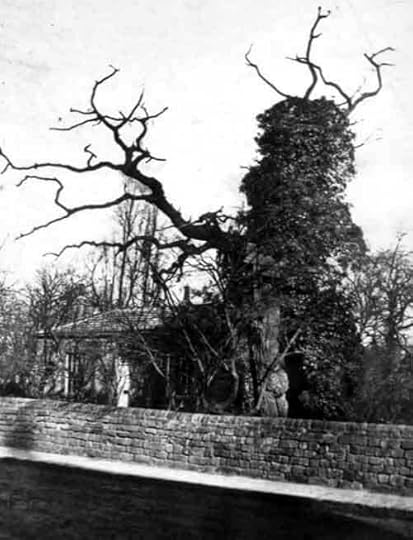When Leeds Got Its Name
First of all, many thanks to those who came to the two panel events last week – nearly 100 of you in all. I hope you had a much fun as we did…
Ask the question “When was Leeds founded?” and every answer is going to be qualified with if and maybe and possibly.
It’s impossible to come up with a vague date, let along and exact one. But…if Bede’s Ecclesiastical History contains some truth, King Edwin built a church in Loidis in the early 600s – which was sacked a little later by Penda.
Now, Loidis could refer to a part of the British kingdom of Elmet, and Ledsham (part of the church there is ancient) and Ledston. But (a small word doing a lot of work), it’s believed that Loidis means ‘people who live by the river,’ which would be more likely to mean Leeds. If so, there would already have been some kind of settlement here, large enough to warrant a church.
It means, too, that Christianity had arrived, although the pagan Penda would interrupt that for a few years – he was defeated the battle of Winwaed, which might have been in Whinmoor, somewhere near to what’s now the big Arium council nursery in the 650s. You can still find a street or two named for him between Stanks and Whinmoor.
Again, we don’t know when Leeds first got a church. It was probably made of wood, and later rebuild, more solidly and lastingly, in stone. Nothing like the building we know today, or even the one the preceded it. It would have been far more modest in these Saxon times. No pews. Maybe a stone bench built into the west wall for those who couldn’t stand.
Leeds was also a parish, and it became a large and influential one, although it might not have begun quite so grandly. Certainly by Norman times it covered 32 square miles, taking in not only the village, but a host of surrounding communities.

We know about the Vikings arriving, in York from 866, if not earlier. Was there much pillaging in Leeds? Little evidence of it, and recent digging indicates they preferred East Yorkshire to the West Riding overall (no surprise, as the landscape is very reminiscent of Denmark). But they were here, they settled, intermarried.
In the 10th century, Leeds stood on the edge of two kingdoms, a cross point, which elevated its status. There were also fives crosses standing outside the church. Not preaching crosses, because the time for those had passed. These were memorials to important people. They were carved and would have been covered in plaster and brightly painted; probably the only splash of colour in Leeds. Along with Christian imagery, there’s also a representation of Wayland the Smith from earlier times, a sign that old and newer religions could co-exist. What remained of the crosses was found in the call of the Parish Church when it was being torn down and rebuilt in 1838. Enough fragments remained to assemble a single cross, which now stands in the church.

Leeds might have hosted a saint in the 940s, by which time is was very much part of the Danelaw and under Viking control St Cathroe, or Cadroe, might have crossed from the kingdom of Cumbia to the kingdom of the Northmen here, where he was escorted to York to meet King Eric. Eric’s wife was supposedly Cathroe’s sister. However, Eric Bloodaxe was not the king in York at the time, and his wife was supposed to be Norwegian. On top of that, the crossing point is named as Loidam Civitatem, which evidently can be read as either Leeds or Carlisle.
While there are precious few artefacts from the Viking era, their presence here remains in some of the words we use every day, like beck, gate (street), kirk, and many more.
The legal administration was through the wapentake, more or less equivalent to the Saxon hundred. One was in Morley, the other in Headingley, called the skyrack, or shire oak. An ancient oak stood across from the pub of that name (outside the Original Oak) until it finally died in 1941.

After the Vikings, of course, came the Normans…and Loidis became Ledes (probably pronounced as two syllables, it would have sounded similar to today’s name for the place). By then, Leeds had a church, where it stands now, a tithe barn, mill, communal over, and somewhere between thirty and fort families living on the only street – Kirkgate.
I hope you’ll remember that my new book, A Dark Steel Death (set in 1917, not early Leeds) is out for you to buy or borrow from a library. Thank you.




